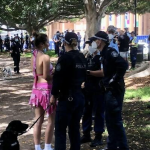Can I Change My Plea from Guilty to Not Guilty?

Defendants who are charged with criminal offences are often unsure as to how they should plead.
This uncertainty may arise as a result of not fully understanding the essential elements (or ingredients) of the charges they are facing. They may alternatively wish to plead guilty to expedite the matter, or even because they are ineligible for Legal Aid but cannot pay for private legal representation and are apprehensive about self-representing in defended proceedings.
Such an apprehension is certainly understandable, given they will often be up against well-resourced, professional prosecutors.
In other situations, they may plead guilty after receiving incorrect advice from lawyers who do not specialise – or do not have sufficient relevant experience – in criminal cases, or the type of offence with which the client is charged.
In any event, there are mechanisms through which a defendant who has entered a plea (or pleas) of guilty may be able to change their plea (of pleas) to not guilty. This is known by lawyers as a ‘plea traversal’.
How can I change my plea from guilty to not guilty?
The provision for plea traversal for a matter where a plea of guilty was entered in the Local Court for ‘summary proceedings’ (which are those to be finalised in the Local Court rather than be committed to a higher court) are contained in section 207 of the Criminal Procedure Act 1986 (NSW).
The section provides as follows:
(1) An accused person may, at any time after conviction or an order has been made against the accused person and before the summary proceedings are finally disposed of, apply to the court to change the accused person’s plea from found guilty to found not guilty and to have the conviction or order set aside.
(2) The court may set aside the conviction or order made against the accused person and proceed to determine the matter on the basis of the plea of not guilty.
The provision for changing a plea of guilty to not guilty is entered at ‘committal proceedings’ (the time at which a case is referred from the Local Court to a higher court) or after the case is referred to the District or Supreme Court is contained in section 103 of the Criminal Procedure Act which states as follows:
(1) If an accused person brought before the District Court or the Supreme Court under section 97 or this Division changes to not guilty the plea to the offence on which the accused person was committed to the Court, the Judge must direct that the accused person be put on trial for the offence.
(2) On the direction being given, the accused person is taken to have been committed for trial for the offence. The Judge may make the same orders and do the same things (including dealing with the accused person) as a Magistrate can on committing an accused person for trial.
(3) The Judge may give directions as to matters preliminary to the trial as the Judge thinks just.
(4) A direction may not be given under subsection (1) if the offence is punishable by imprisonment for life, but the Judge may make an order under section 101.
(5) Despite subsection (1), the Judge may make an order under section 101 instead of giving a direction under subsection (1), if of the opinion that such an order should be made.
Situations that justify changing plea of guilty to not guilty
The factors to be considered by the court before changing the plea have been set out by the Court of Criminal Appeal.
In the case of Regina v Hura [2001] NSWCCA 61, the New South Wales Court of Criminal Appeal listed the following matters as relevant to any determination of whether to accept a plea traversal:
- “Where the appellant ‘did not appreciate the nature of the charge to which the plea was entered’ (Regina v Ferrer-Esis (1991) 55 A. Crim. R. 231 at 233).
- Where the plea was not ‘a free and voluntary confession’ (Regina v Chiron (1980) 1 NSWLR 218 at 220 D-E).
- The ‘plea was not really attributable to a genuine consciousness of guilt’ (Regina v Murphy [1965] VR 187 at 191).
- Where there was ‘mistake or other circumstances affecting the integrity of the plea as an admission of guilt’ (Regina v Sagiv (1986) 22 A. Crim. R. 73 at 80).
- Where the ‘plea was induced by threats or other impropriety when the appellant would not otherwise have pleaded guilty … some circumstance which indicates that the plea of guilty was not really attributable to a genuine consciousness of guilt’ (Regina v Concotta (NSWCCA, 1 November 1995, unreported)).
- The ‘plea of guilty must either be unequivocal and not made in circumstances suggesting that it is not a true admission of guilt’ (Maxwell v The Queen (supra) at 511).
- If ‘the person who entered the plea was not in possession of all of the facts and did not entertain a genuine consciousness of guilt’ (Regina v Davies (NSWCCA, 16 December 1993, unreported)). See also Regina v Ganderton (NSWCCA, 17 September 1998, unreported) and Regina v. Favero [1999] NSWCCA 320.”
In the case of White v R [2022] NSWCCA 241, the Court of Criminal Appeal made clear that the appropriate test to apply when deciding whether to allow a defendant to change a plea of guilty to not guilty before conviction is whether this is “in the interests of justice”.
That case involved a defendant who unexpectedly entered a plea of guilty during arraignment, which is a process in the District or Supreme Court when the charge/s are read to the defendant and he or she formally enters a plea/s.
The defendant realised his mistake shortly thereafter and sought to change his plea to not guilty. The judge refused the request after applying the “miscarriage of justice” test; which in the case at hand focused solely on the integrity of the plea itself. The defendant was sentenced and then appealed to the New South Wales Court of Criminal Appeal.
The appeal court found that the onerous miscarriage of justice test was the wrong one to apply, and that matters beyond the plea’s integrity could and should therefore have been taken into account.
The court further found that the defendant’s onus of persuading the judge to allow the change of plea is not a “substantial” or “heavy” one, ultimately allowing the change of plea on the basis that it was in the interests of justice to permit it.
The decision makes clear that the more stringent miscarriage of justice test would have applied if the defendant had sought to traverse his plea after being sentenced.
What is the process for changing a plea from guilty to not guilty?
The first step is for a traversal application to be made in the relevant court.
Cases will normally be set down for a short court date, known as a mention, at which time the court will make directions for the filing of documents in support of the application – such as affidavits and any other materials.
If you were represented by a lawyer when you entered your plea of guilty, you will normally require an affidavit from that lawyer regarding the advice given and instructions received, in addition to any other relevant matters.
You will also need to swear an affidavit regarding the basis upon which you wish to change your plea.
Your affidavit will normally canvass matters such as: you did not understand the charges against you, and/or you did not understand the lawyer’s advice (where applicable), and/or the advice provided to you was incorrect.
The court will then decide whether to accept your application. If so, the case will proceed upon a not guilty plea. If not, the proceedings will continue as if the application was not made.






